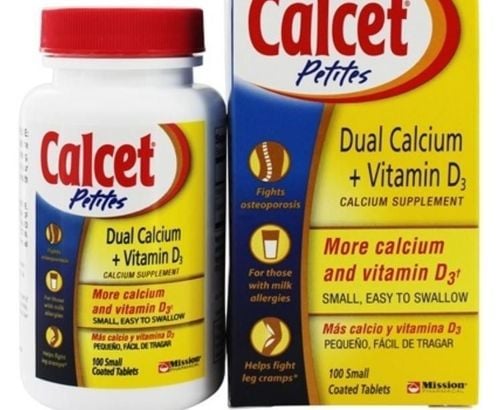This is an automatically translated article.
The article was professionally consulted by Specialist Doctor I Nguyen Thi My Linh - Neonatologist - Pediatrics - Neonatology - Vinmec Danang International General HospitalVitamin D is not only important for a child's development, it is also essential for overall health. But if you think your child is getting enough vitamin D, you may be surprised that the number of children with vitamin D deficiency is now alarmingly high and the number continues to increase. In particular, children are prone to vitamin D deficiency due to lack of sunlight in winter.
1. The situation of vitamin D deficiency in young children
Experts estimate that only one in five formula-fed babies and one in 20 breastfed babies are getting the recommended amount of vitamin D. As a result, by 2008, the American Academy of Pediatrics (AAP) doubled the daily recommended vitamin intake for infants and children from 200 to 400 IU per day.But according to estimates by the US Centers for Disease Control and Prevention (U.S. CDC), only 5% to 13% of breastfed babies and 20% to 37% of formula-fed babies get enough vitamin D. comply with the latest guidelines.
Centers for Disease Control and Prevention researchers analyzed data from a nationwide survey of infant feeding practices between 2005 and 2007 to estimate how many babies there were. newborns receive enough vitamin D during the first year of life. The investigation found that vitamin D supplementation was quite low, even in exclusively breastfed babies. Only 1% to 4% of formula-fed babies and 5% to 13% of babies who drink only breast milk are fortified with vitamins, because breast milk contains very low levels of vitamin D, so breastfeeding mothers should take vitamin supplements. this.

Sữa mẹ chứa hàm lượng vitamin D rất thấp
2. Children lack vitamin D in winter
Most people can make enough vitamin D from sunlight during the summer, but synthesis of this vitamin may be incomplete in the winter. A 2016 study by researchers at the US Centers for Disease Control and Prevention estimated that 14 to 18 percent of Americans don't get enough vitamin D.Vitamin D is important for bone health and muscle. Vitamin D helps the body absorb calcium and phosphorus from food, helping to build strong bones. Only a few foods naturally contain vitamin D, and it is difficult to get enough vitamin D from food. Some baby formulas have fortified vitamin D, but most people only get about a quarter or even less of their recommended vitamin D needs. Most vitamin D is made when the skin is exposed to the sun.
However, winter has fewer hours of sunshine and due to cold weather, parents will cover their children's clothes and limit going outdoors, thus reducing skin density and the time children are exposed to the sun. This is the main reason why children are susceptible to vitamin D deficiency in the winter.
Vitamin D deficiency can lead to decreased bone density, contributing to osteoporosis and fractures. In children, vitamin D deficiency can cause rickets, a rare disease that causes bones to become soft and curved.
3. Vitamin D supplements for children like in winter?
The U.S. Centers for Disease Control and Prevention (U.S. CDC) recommends the following:3.1 For breastfed babies Breast milk often does not provide enough vitamin D that babies need, so vitamin D supplements are needed for children. breastfed infants and young children. Mothers should consult with their doctor about giving their children over-the-counter vitamin D drops of 400 IU/day.
3.2 For formula-fed babies The amount of formula a baby drinks per day depends on the age of the baby, about 960ml of formula per day is enough for 400 IU of vitamin D. If your baby drinks less than this amount per day. days, your child may need a vitamin D supplement. Talk to your doctor if you want to give your child a vitamin D supplement.
3.3 For children starting to eat solids Parents can increase vitamin D supplementation through some foods such as:
Certain types of fish such as salmon or light canned tuna (light canned tuna) . Egg. Products fortified with vitamin D such as cow's milk (for babies 12 months and older), yogurt, cereal, and some juices.

Bổ sung vitamin D qua cá hồi
3.4 Should children be exposed to the sun? The American Academy of Pediatrics (AAP) recommends that children under 6 months of age should not be exposed to direct sunlight and that clothing and hats should be worn to protect children from the risk of skin cancer. Sunlight is not a suitable source of vitamin D for children at this age and there are several factors that determine the amount of vitamin D that children will synthesize from sunlight such as:
Living at high latitudes, especially during winter months. Air quality conditions: high levels of air pollution. Weather conditions: dense clouds. How to wear clothes. Use sunscreen. Skin pigmentation: darker skin types. Therefore. Parents should talk to their doctor for support to make sure your child is getting enough vitamin D.
Besides vitamin D, parents should supplement their children with supportive products containing lysine, trace minerals and vitamins. Essential nutrients such as zinc, chromium, selenium, and B vitamins help to fully meet the nutritional needs of children. At the same time, these essential vitamins also support digestion, enhance nutrient absorption, help improve anorexia, and help children eat well.
Parents can learn more:
Signs of zinc deficiency in children
Micronutrient deficiency and failure to gain weight in children
Please regularly visit Vinmec.com website and update useful information to take care of your child. Take care of the baby and the whole family.
Articles refer to sources: webmd.com, cdc.gov














